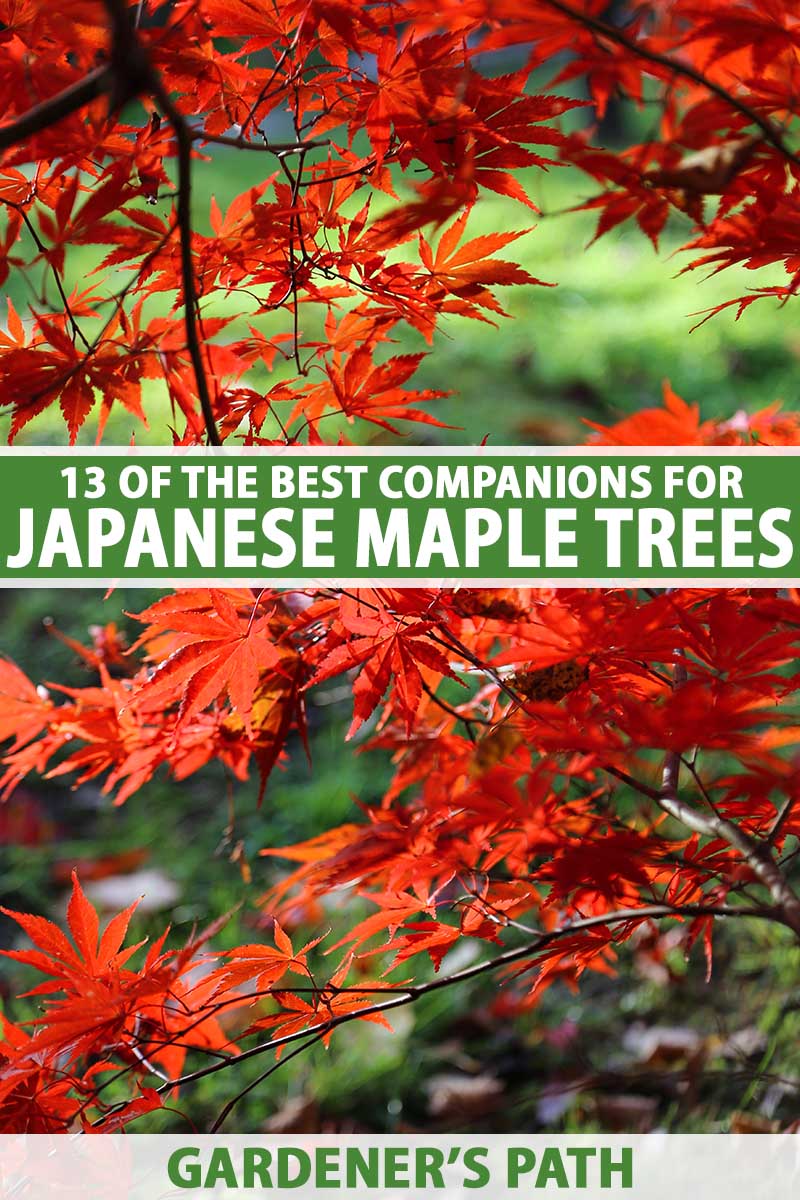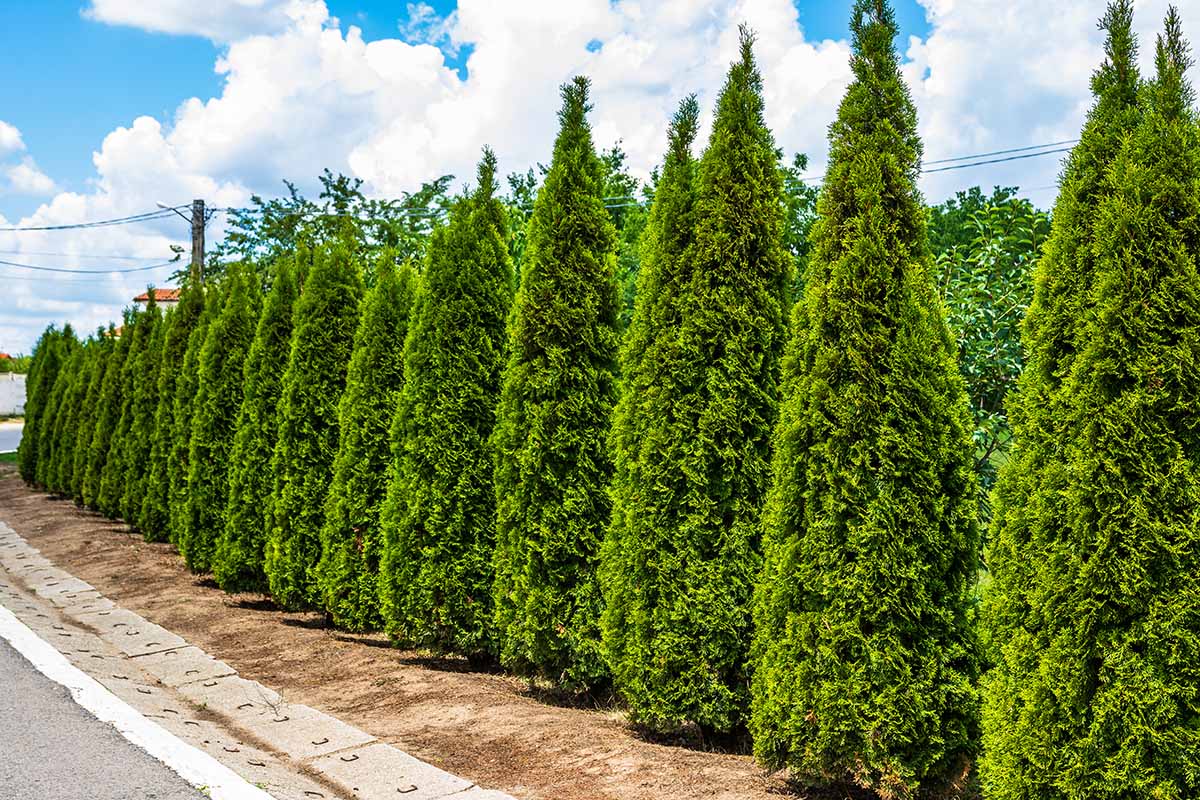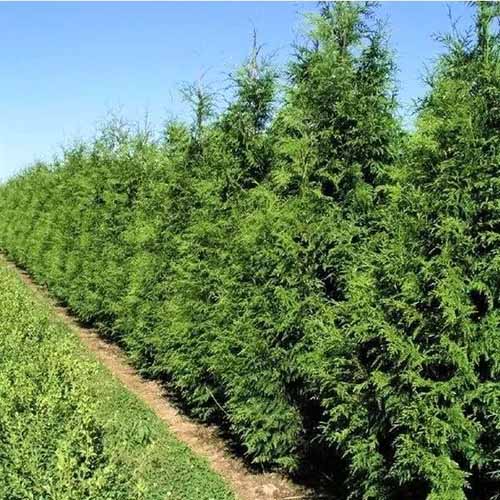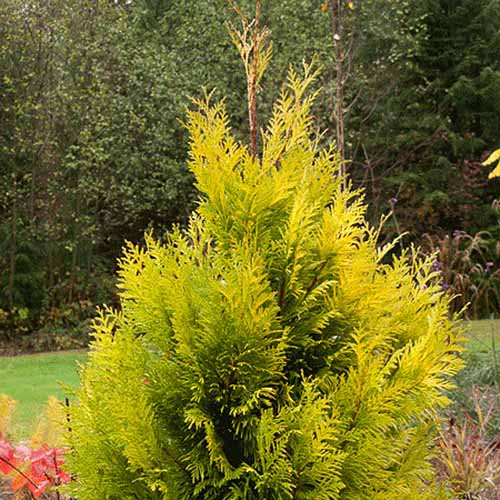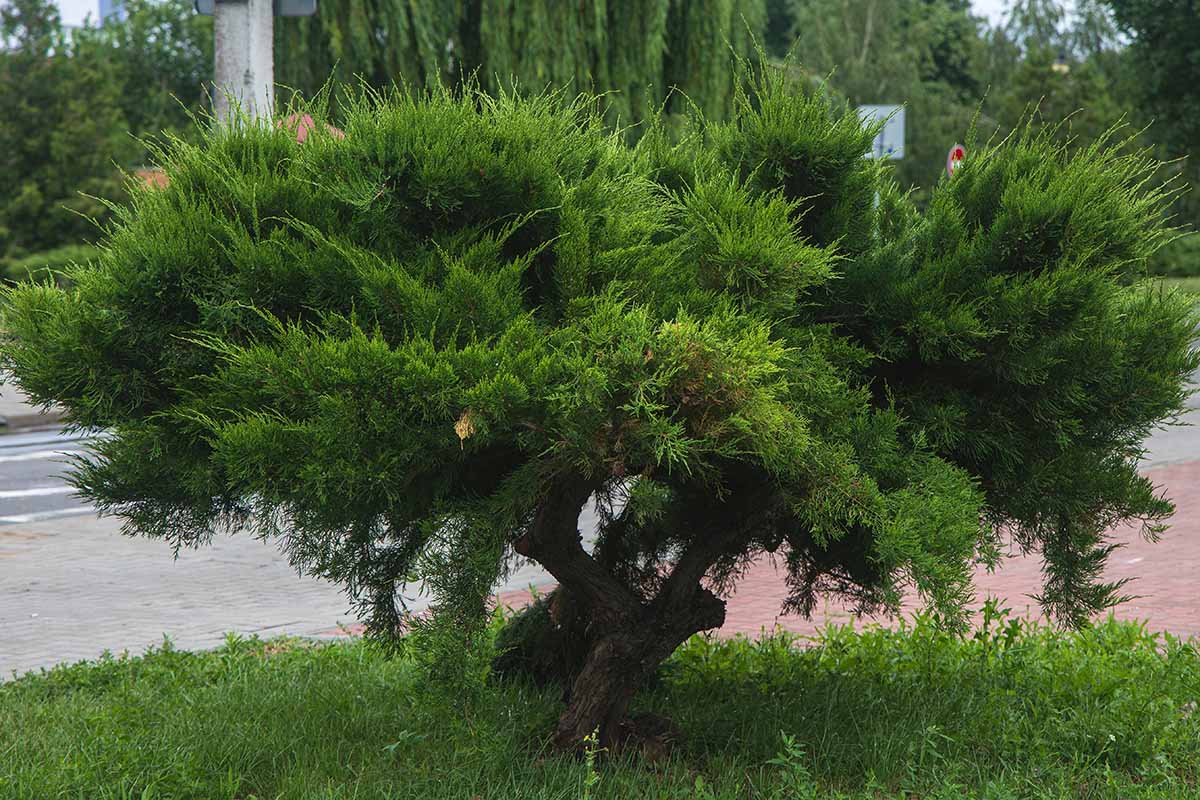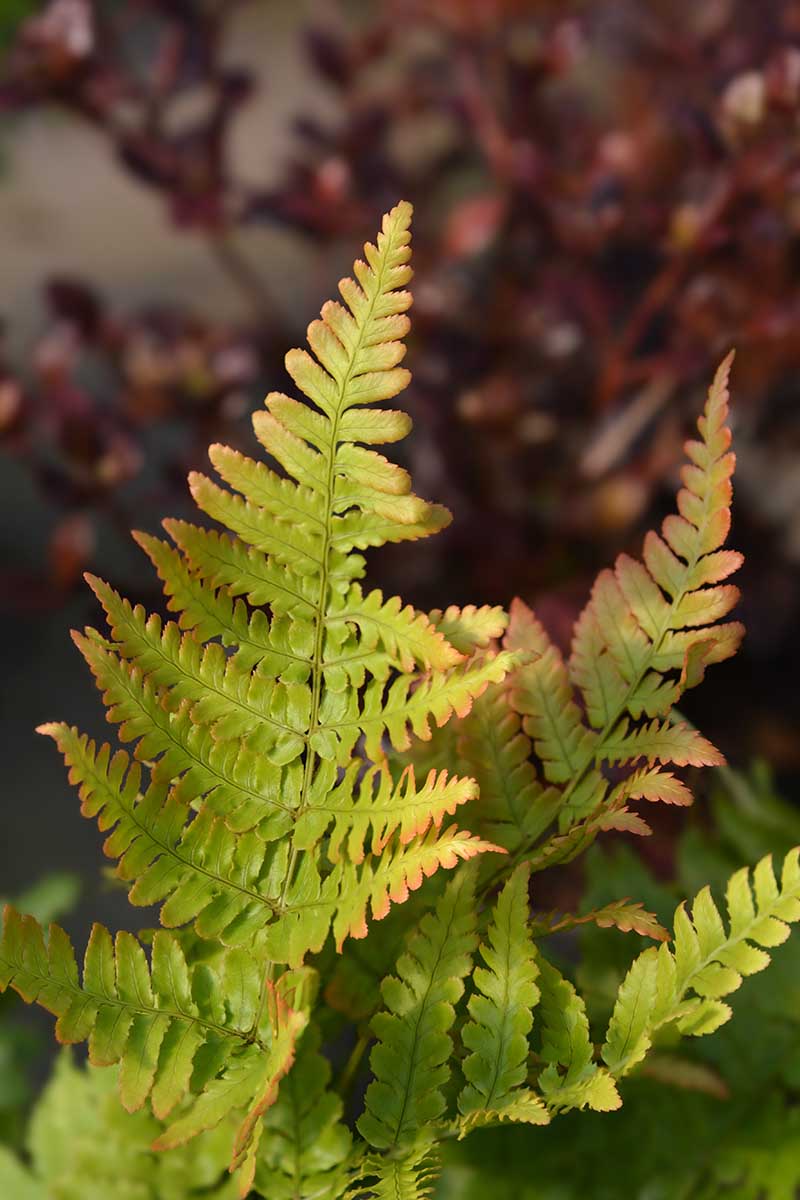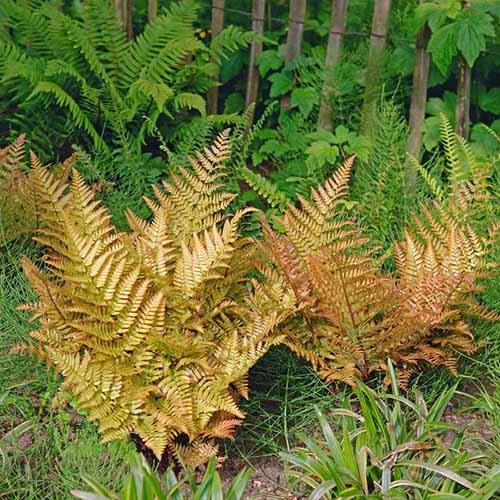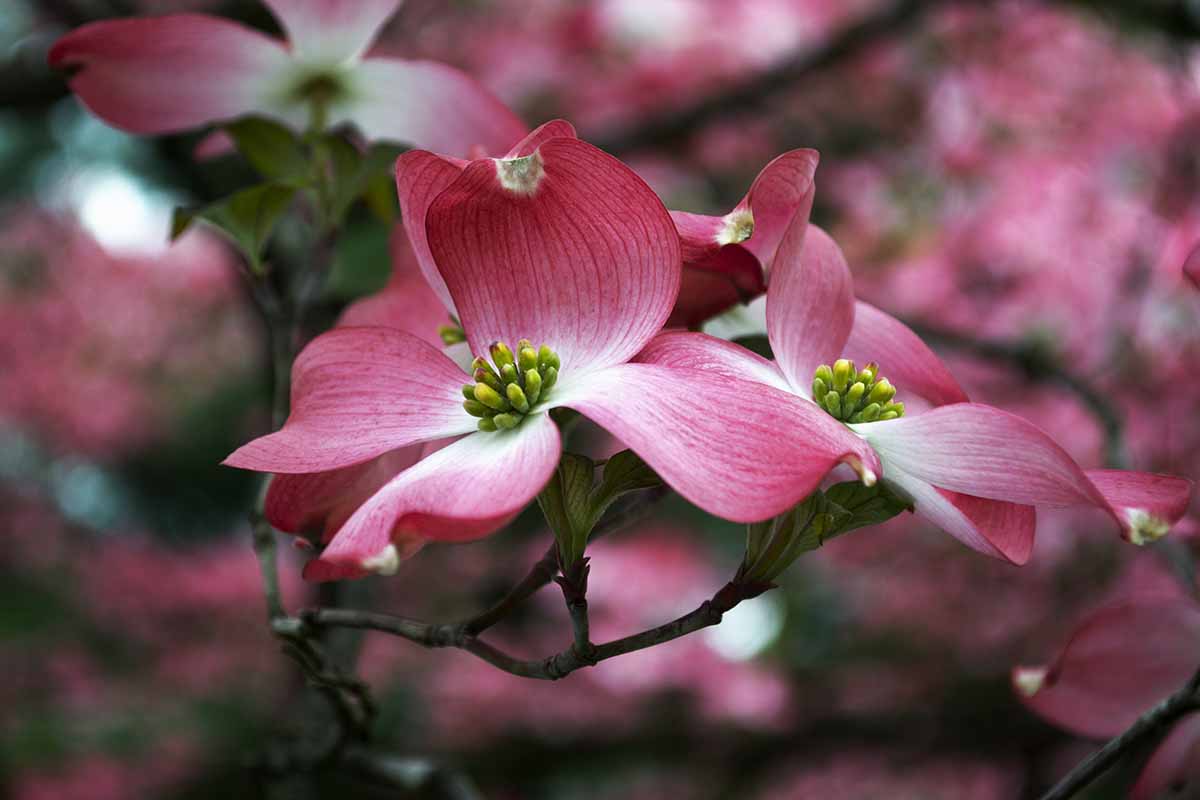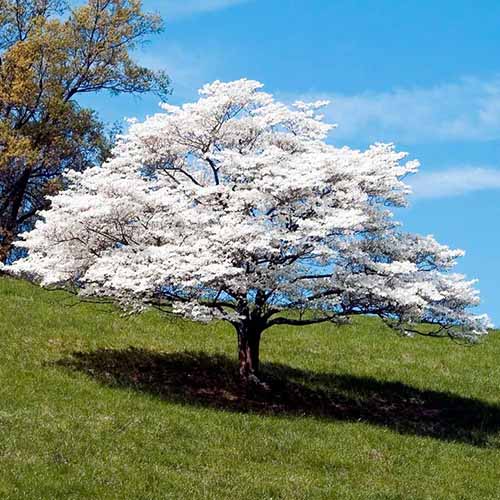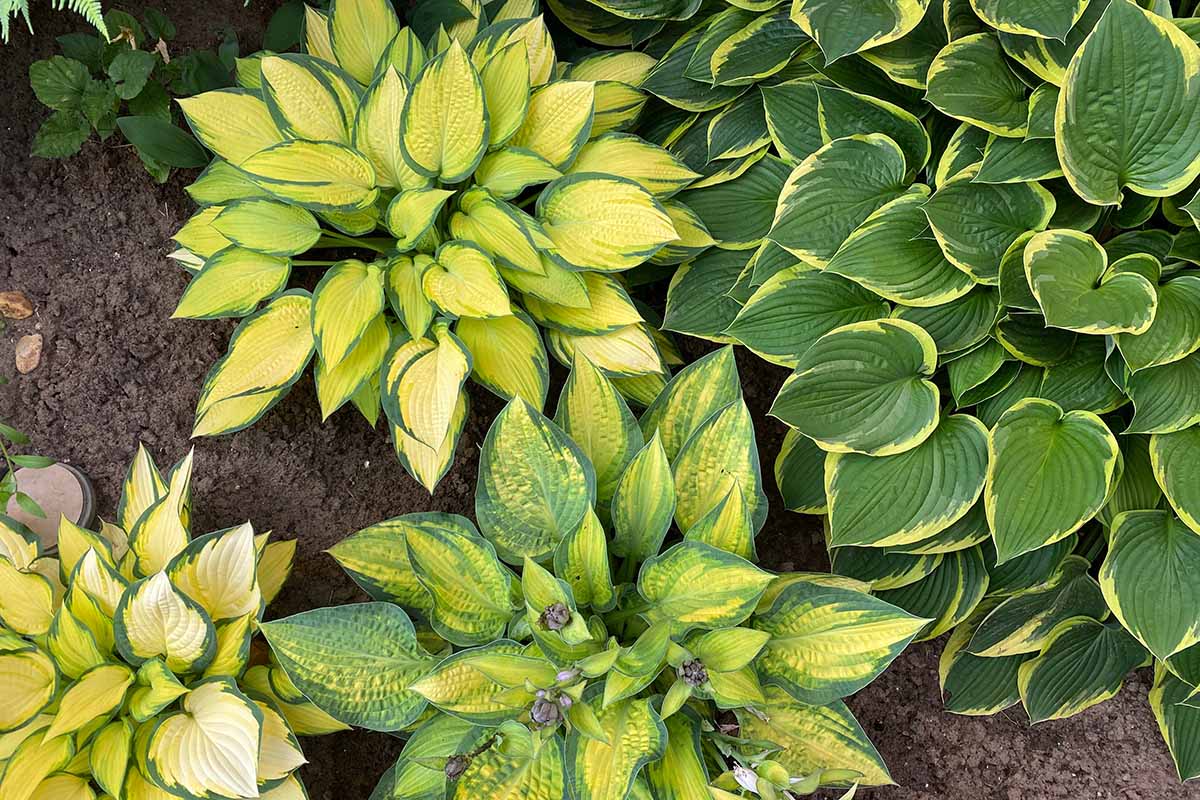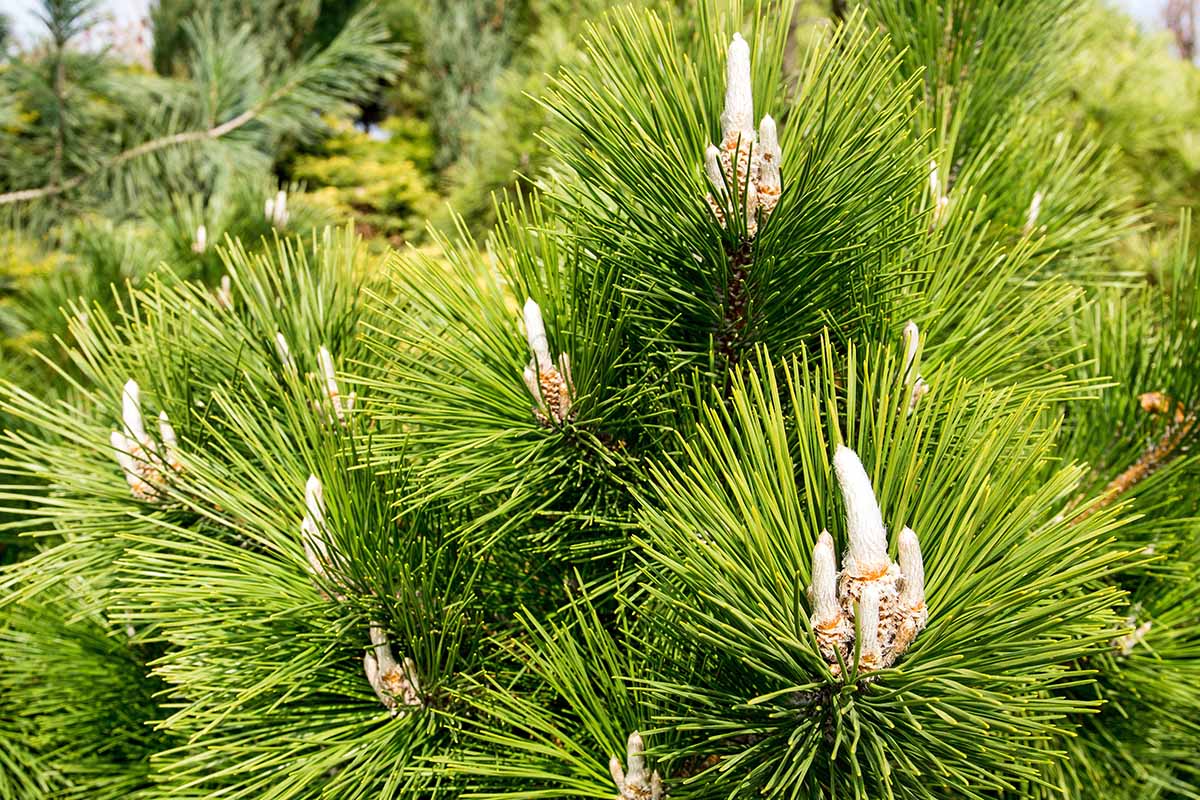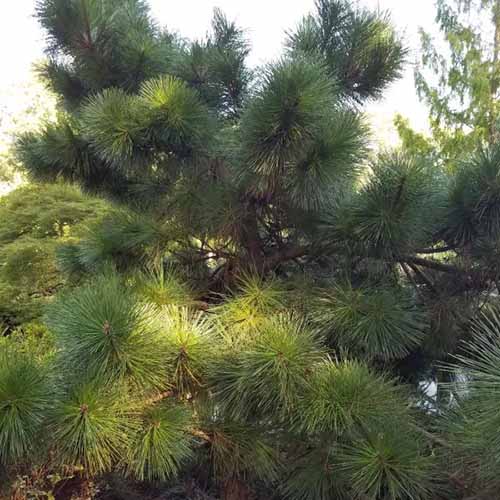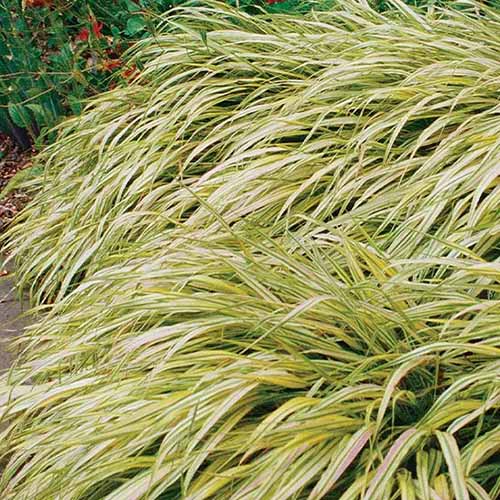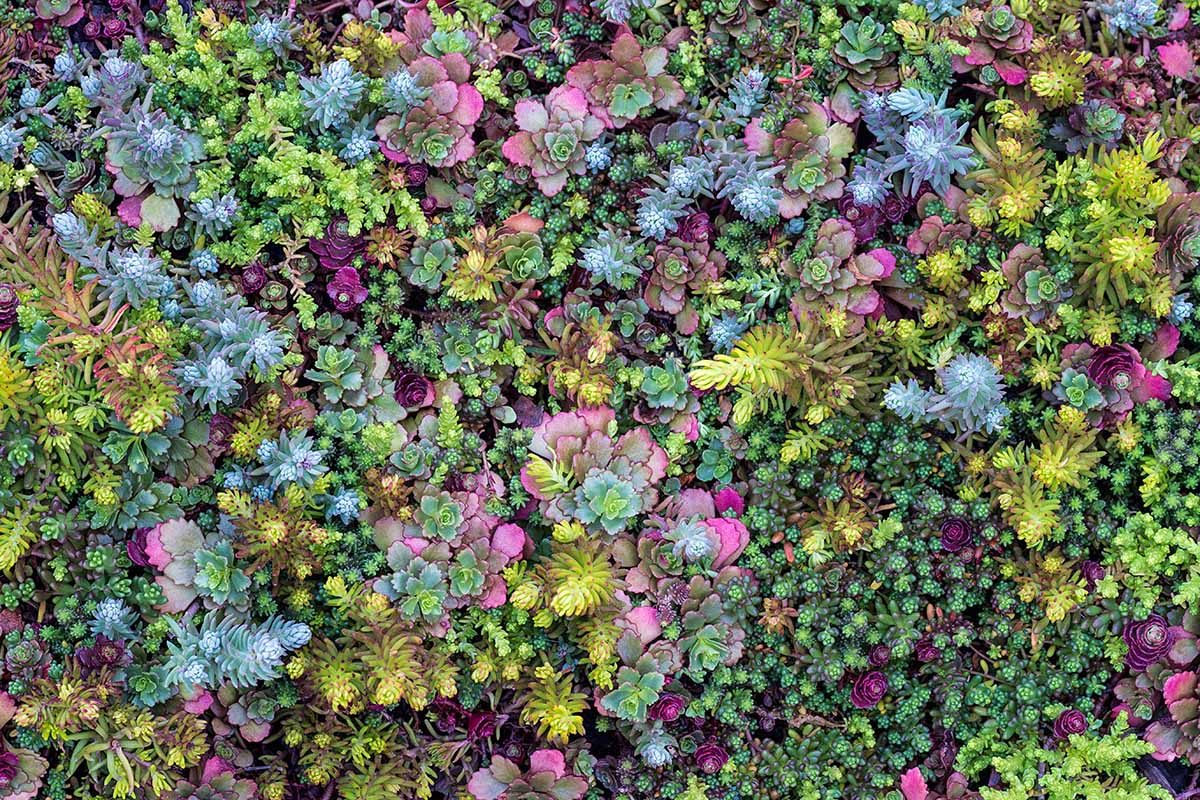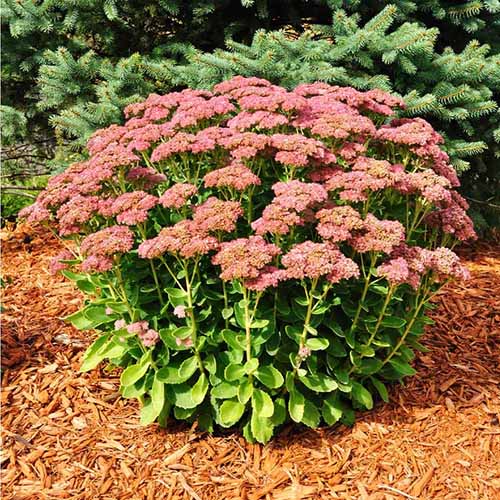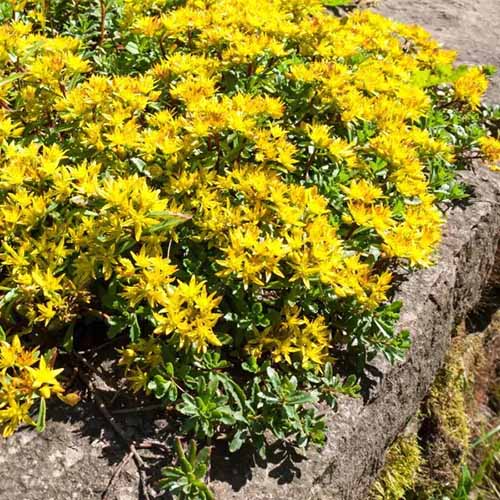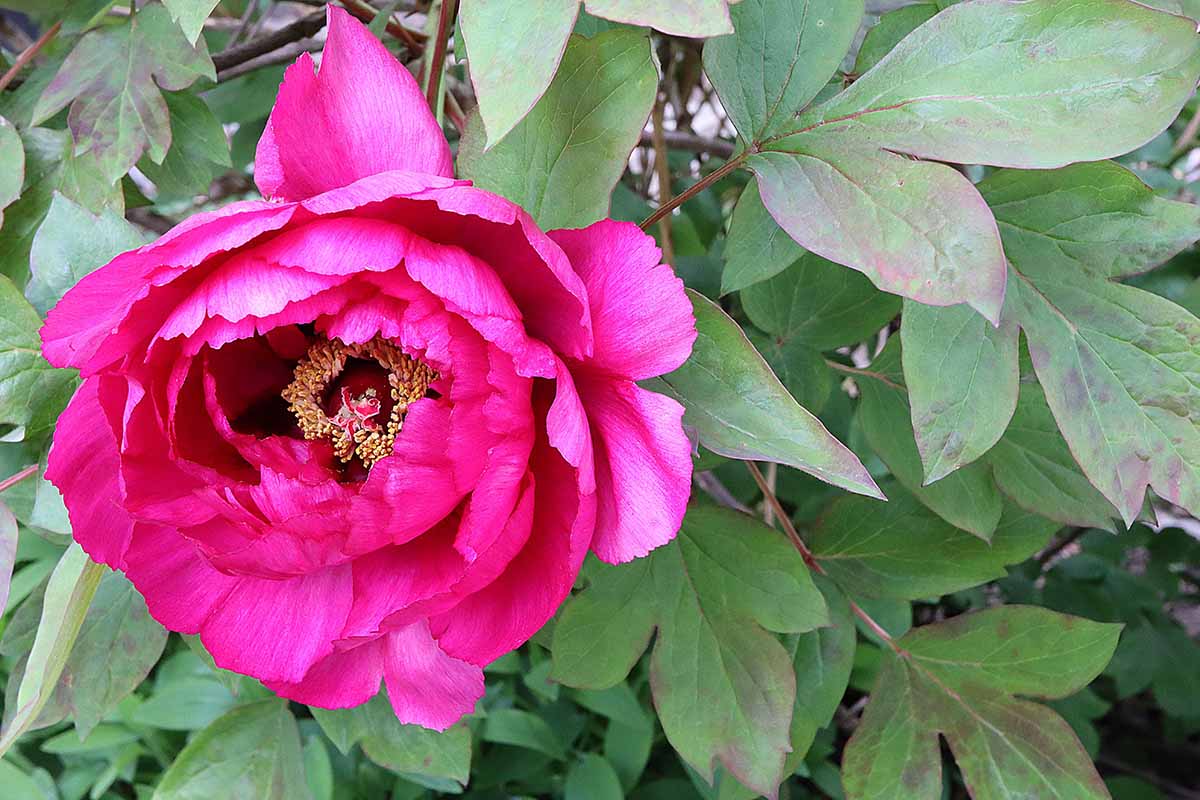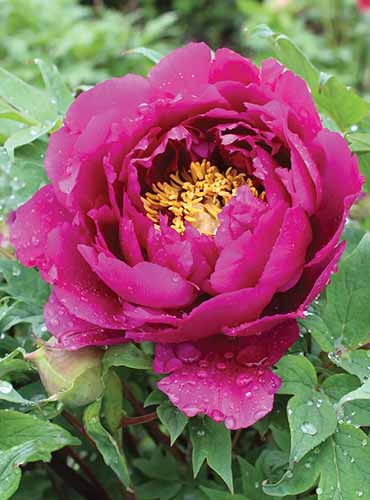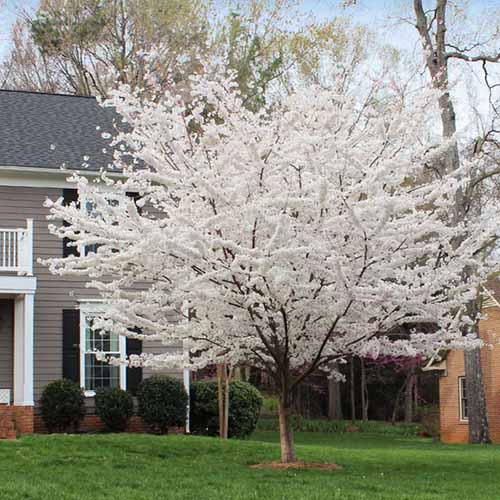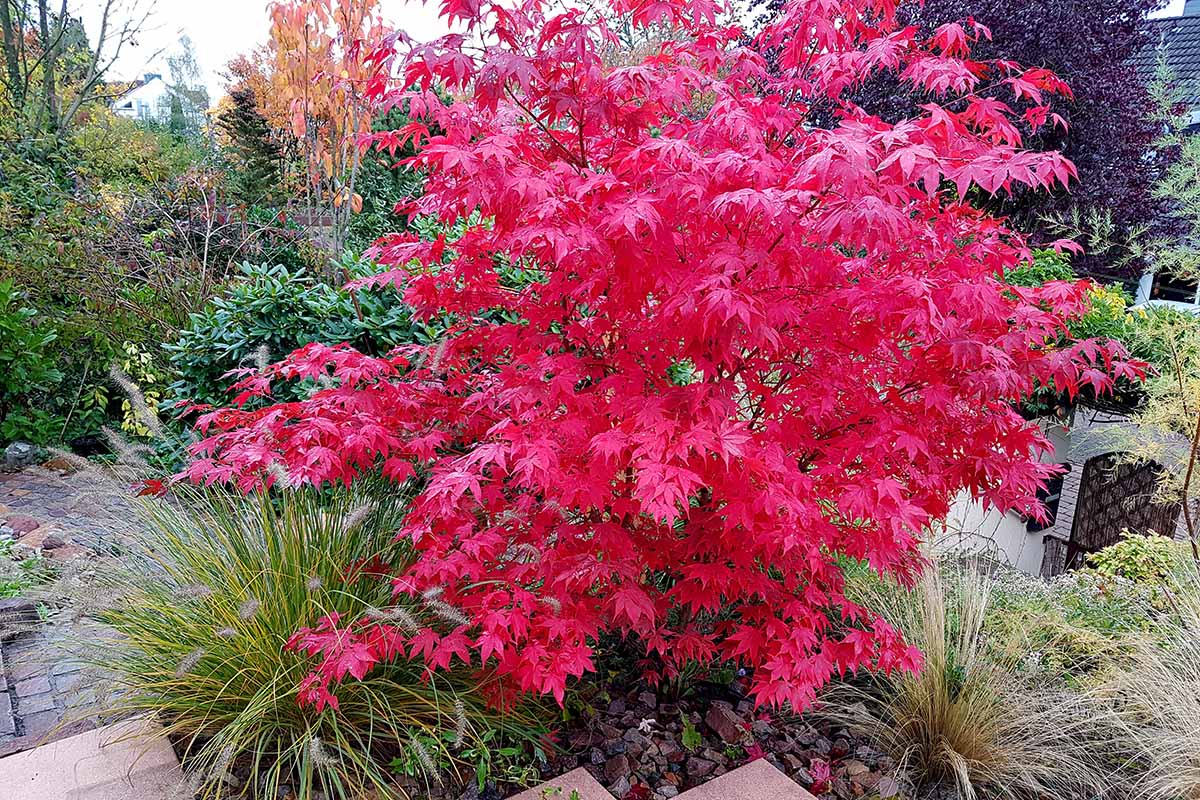Most gardeners can find a spot for a Japanese maple in their garden without issue – it’s that versatile. We link to vendors to help you find relevant products. If you buy from one of our links, we may earn a commission. Carefully chosen companion plantings can help to highlight the beauty of specimens in the garden that serve as a focal point, without taking away from their own aesthetic assets. And when you look at the landscape as a whole, you have a masterpiece that couldn’t have been achieved by dotting a few individual plants here and there on their lonesome. If you need a refresher on how to grow Japanese maples in your garden, our guide has you covered. In this roundup, we’ve collected 13 of the best plants to complement the glory of the Japanese maple in your garden, while adding their own splendor to the scenery. Here’s the lineup: In addition to the plants discussed below, non-living landscape elements such as stones, statues, and water features look fantastic when placed in the vicinity of a Japanese maple, even more so if it’s a Japanese-themed landscape that you’re shooting for. Let’s jump in:
1. Arborvitae
Native to North America and parts of East Asia, arborvitae grows best when cultivated in USDA Hardiness Zones 3 to 8. The Thuja genus is composed of five different species of coniferous evergreen trees characterized by flattened, fan-shaped branchlets of scale-like green leaves. Often featuring an upright and pyramidal growth habit, arborvitae serve as amazing hedges and privacy screens. Native to parts of Asia and Australia, the sacred lotus is hardy in Zones 4 to 11, and survives by securing itself to the submerged soil with a rhizomatous root system. An excellent species to start with is Thuja occidentalis, or the American arborvitae, native to North America. It’s a go-to hedging evergreen that grows 25 to 40 feet tall and 10 to 15 feet wide at maturity. With a broad, pyramidal habit and dense, bright green foliage, the American arborvitae makes for a perfect backdrop to your A. palmatum. American Arborvitae You can find American arborvitae available in sprinter pots from Nature Hills Nursery. Another beautiful option is Thuja plicata ‘4Ever’ aka ‘Forever Goldy.’ With a mature height of 10 to 12 feet, a width of three to four feet, and a striking golden-green hue to its foliage, this plant would look fantastic when planted behind or to the side of a Japanese maple. ‘Forever Goldy’ You can find this cultivar available in one-gallon containers at FastGrowingTrees.com.
2. Chinese Juniper
Native to Eastern China, Mongolia, Japan, and India, Juniperus chinensis thrives in USDA Hardiness Zones 4 to 9. The variety within this species is vast, as there are many different cultivars of various sizes, colors, and growth habits to choose from. The common denominator among these is flattened, evergreen foliage that’s instantly recognizable. Whether you choose an upright yellow tree to plant in the background or a sprawling blue shrub to install beneath the canopy, there’s a Chinese juniper for every occasion. ‘Blue Point’ sports blue-green foliage and an upright pyramidal form with a broad base, topping out at four to 12 feet tall with a two- to eight-foot spread. This Chinese juniper would provide a contrasting column of order next to the asymmetrical sprawl of a Japanese maple. ‘Blue Point’ Chinese Juniper You can find ‘Blue Point’ available in one-gallon pots at FastGrowingTrees.com. Learn more about growing Chinese junipers in our guide.
3. Coral Bells
Native to North America, coral bells (Heuchera spp.) are hardy in Zones 4 to 9 and best known for their showy foliage. The leaves can be blue, brown, green, pink, purple, white, and/or variegated, and appear as unevenly lobed discs, with each lobe’s veins intersecting in the “palm” of each leaf. The insignificant, tiny flowers are borne on long, tall, ultra-skinny stalks, which some beholders might consider beautiful… but I personally snip them off to divert the plant’s energy to producing more vibrant leaves. The clumped mass of foliage grows very low to the ground – with a mature size of one to one-and-a-half feet tall and one to two feet wide – which lets you stick them in some pretty tight spots around and under an A. palmatum. ‘Guacamole’ Coral Bells PlantingTree.com sells ‘Guacamole,’ a hybrid cultivar with foliage in shades of green that resemble avocado pulp. Man, this roundup is suddenly making me crave a burrito bowl… Read more about growing heuchera in our guide.
4. Ferns
I know I’m casting a rather large net by including a section on “ferns,” but I had a hard time choosing a single group or species to pair with Japanese maple. There’s something about their uniquely-shaped fronds that just looks fantastic when they’re adjacent to this maple’s uniquely-shaped foliage. “Leaves of a strangeness, together lack lameness…” Okay, I’m still working on that one. If you’ve been in the gardening game for any length of time, you’re probably aware of plants in the Polypodiopsida family – they unfurl in response to light, they reproduce via spores, and they love partial shade. Ferns range in height and spread from a couple of inches to six feet – and that’s not even including tree ferns, which can grow up to 80 feet tall! Read more about growing ferns in our guide. The typical greenness of a fern’s foliage pairs quite nicely with the reddish-purple varieties of A. palmatum, especially as an underplanting that’s nestled beneath a Japanese maple’s canopy. Dryopteris erythrosora ‘Brilliance’ is a Japanese shield fern, also known as autumn fern, that grows two feet tall and wide. It emerges in spring with beautiful orange-red new fronds that mature to a lustrous green in summer, and is very disease- and pest-resistant. It would look fantastic planted in clumps near a Japanese maple or under its canopy. ‘Brilliance’ You can find ‘Brilliance’ available from FastGrowingTrees.com in one- and three-gallon containers.
5. Flowering Dogwood
Reaching a height and spread of 15 to 30 feet, Cornus florida is native to the eastern US and Canada, and northern Mexico, and hardy in Zones 5 to 9. With an upright, spreading form, this tree has oval-shaped green leaves that transition to shades of purple and red in autumn. The flowers are iconic and easy to identify – each inflorescence has a clump of insignificant green flowers at its center, surrounded by petal-like bracts which have little darkened notches on the edges. Blooming in early spring, the flowers range in color from white to pink to red, or even a golden yellow. If you ask me, unless you’re in the market for something evergreen, eye-catching flowers are a must if you wish to plant another type of tree in the vicinity of your Japanese maple – and the flowering dogwood definitely delivers. And even when the flowers and leaves are absent, the tree’s naked form is a sight to behold, especially when frost or snow has collected upon the branches. These trees provide asymmetrical balance with their contrasting forms, foliage, and flowers, yet similar sizes. Keep “opposite, yet interconnected” in mind when placing your specimens. Flowering Dogwood To purchase a gorgeous white-flowering Cornus florida that’s sold at various starting heights between one and seven feet, check out FastGrowingTrees.com. The stark white flowers pair quite nicely with the dark red foliage of certain Japanese maple varieties in springtime.
6. Hostas
As Asian natives that are hardy in Zones 3 to 9, Hosta species are suitable companions for the Japanese maple. Their large deciduous leaves are ideal for capturing sunlight in the partially-shaded conditions necessary for them to thrive. You can plant hostas under Japanese maple canopies to add color, texture, and interest to the ground. Depending on the species and cultivar, the showy leaves come in shades of blue, green, and yellow-green, and can even have striking variegation. Discover some of our favorite varieties in this roundup. They’re similar to coral bells in that you can snip off the flower stalks and not miss out on anything ornamentally important, though some varieties of hosta do produce more stunning flowers than others. With a mounding habit, hostas rarely grow taller and wider than two and three feet, respectively. For a selection of hostas to add to your garden, check out PlantingTree.com. See our guide to learn more about growing hostas.
7. Japanese Black Pine
Native to Japan and South Korea, Pinus thunbergii is suitable for growing in Zones 5 to 8, and reaches a mature height of 20 to 50 feet, with a spread of about half that. P. thunbergii produces two three- to six-inch-long, dark green needles per sheath, with prominent vertical bunches of silvery-white buds at the apex of each branch. This pine tree lacks the prominent central leader that many of its relatives possess, and branches grow more irregularly with age, creating an asymmetrical form. Given the Japanese maple’s own twisting-and-turning branching habit, this makes the Japanese black pine all the more suitable for complementing A. palmatum, whether as a taller specimen with an overarching canopy or as a background planting. Japanese Black Pine You can find P. thunbergii available to purchase at Nature Hills Nursery.
8. Japanese Snowbell
Styrax japonicus, aka Japanese snowbell tree, is native to China, Japan, and northern parts of the Philippines. Hardy in Zones 5 to 9, this deciduous flowering tree reaches a mature height and spread of 20 to 30 feet, and has a drooping and rounded growth habit which commands the attention of onlookers. The elliptically-shaped and glossy foliage is green in summer, and turns golden to reddish in fall. S. japonicus flowers are waxy and white-petaled with yellow stamens, and hang downwards from pink stems that are about one to two inches in length. In particular, the cascading flowers are a perfect fit when paired with the foliar habit of Japanese weeping maples, especially when your A. palmatum var. dissectum is placed in the foreground or under the canopy of a Japanese styrax! Japanese Snowbell If you’re looking for a white-flowering Japanese snowbell, Nature Hills Nursery sells them in #2 containers.
9. Hakone Grass
For a good-looking ornamental grass that does well in the shade, give Hakonechloa macra a try. Native to Japan and ideally cultivated in USDA Hardiness Zones 4 to 9, Hakone grass has paper-thin foliage that’s typically light green, but variegated cultivars are also available with white, gold, or green stripes. Also known as Japanese forest grass, each individual plant typically grows one to three feet tall and spreads one to two feet wide, so don’t try to host any rec league games on a field of Hakone grass or anything like that. It’s the ideal size for growing under or adjacent to a Japanese maple’s canopy. ‘Aureola’ is a variegated cultivar with light green and gold foliage that would look outstanding beneath a Japanese maple with dark foliage. ‘Aureola’ Hakone Grass You can find ‘Aureola’ available in #1 containers at Nature Hills Nursery.
10. Sacred Lotus
This one comes with a bit of an asterisk: you’ll need a body of water – such as a small backyard pond – in order to grow lotus flowers, since Nelumbo nucifera is an aquatic plant. But the way that a Japanese maple’s visual form reflects off the water can’t be beat! Hollow stems transport nutrients and water back and forth between the roots, foliage, and flowers. Every part of the sacred lotus is edible, from its flower petals to the rhizomes. Some stems connect to the middle of leaves, which are circular and shield-shaped with a medium-green hue. Other stems connect to pink-petaled, fragrant flowers with golden yellow stamens, which either float on the water or may be held up to six feet above the water’s surface, depending on the variety. All in all, the water-dwelling and flowery “sui” of this plant contrasts beautifully with A. palmatum’s land-dwelling and foliar-heavy “chi.”
11. Sedum
Here’s a question: how do you sow stonecrop plants? Answer: you sedum! All jokes aside, sedum plants are hardy in Zones 3 to 9, and depending on the variety, they grow the best in full sun exposures, and they are native to many different temperate climates worldwide. Containing over 300 species, the Sedum genus has quite a lot of variation, but the main types of sedum to be aware of for companion planting with Japanese maples are the upright and the creeping varieties. Sedum leaves are thick and fleshy. They can range from white to green to reddish in color. The flowers are small, star-shaped, and are available in a range of colors including white, pink, red, orange, and yellow. The size of these plants makes them perfect for adding in small nearby spaces unoccupied by your Japanese maple, while their clumps of flowers and succulent leaves provide architectural interest lower to the ground, contrasting with the taller body and flatter leaves of A. palmatum. ‘Autumn Joy’ Sedum S. spectabile ‘Autumn Joy’ is a upright cultivar – notable for its reddish-pink flowers and naturally mounding habit – that’s available for purchase from FastGrowingTrees.com. Kamtschaticum Sedum S. kamtschaticum is a yellow-flowering and dark green-leafed creeping species that you can find at Nature Hills Nursery. Learn more about growing sedum in our guide.
12. Tree Peony
Hardy in USDA Zones 4 to 7, Paeonia x suffruticosa is a Chinese native that typically grows four to five feet tall and three to four feet wide. This shrub is slow-growing, which is a downside if you want beautiful peony flowers right this instant. They take around three years to flower after establishment, but this slow growth has a silver lining – peonies can live for a hundred years or more in ideal settings with proper care! The large, showy flowers may be rose, pink, white, or yellow, depending on the cultivar, and they can have single or double blooms. The large, pale green, compound leaves are also very attractive. When placed in the immediate vicinity of a Japanese maple, these peonies look right at home, providing floral interest and a sweet scent as well. For a tree peony variety that would look fantastic when planted in the foreground of a Japanese maple, try Paeonia x suffruticosa ‘Shimadaijin’ aka ‘Island Minister.’ ‘Shimadaijin’ Tree Peony It has light green foliage and reddish-purple petals that border on red as sunlight passes through them, resulting in flowers that appear to change in hue with the movement of the sun. You can find bare root plants available at Burpee. Find tips for growing tree peonies in our guide.
13. Yoshino Cherry
Prunus x yedoensis is a deciduous tree that reaches a mature height of 30 to 40 feet, and a mature width in the canopy of 20 to 50 feet. Native to Japan and ideally grown in USDA Hardiness Zones 5 to 8, Yoshino cherry trees are beloved plantings of the Washington D.C. area, and for good reason. They have an open and spreading growth habit, textured bark for winter interest, and bright green leaves that turn a yellow-ish gold in fall. But the best part of this tree is its flowers. The Japanese call the tradition of viewing Yoshino cherry blooms “sakura hanami,” with “sakura” meaning “cherry blossom, ” and “hanami” meaning “flower blooming.” The petals start off snowy-white for a few weeks, before changing into an attractive shade of pink. As the dropped petals are carried away by the wind, the scenery totally looks like the setting of a samurai movie, which is a major plus in my book. A line of Prunus x yedoensis trees would make for a perfect backdrop to a Japanese maple, especially lovely when in full bloom in the spring. Yoshino Cherry Tree Yoshino cherry trees are available in four- to seven-foot-tall sizes from FastGrowingTrees.com.
A Plethora of Flora
Peanut butter is my absolute favorite food. Its taste, versatility, and nutritional value make it my go-to snack for any time of day. Past roommates have gotten up at ghastly hours to investigate strange noises coming from the kitchen, only to find yours truly inhaling spoonful after spoonful of creamy Jif in an effort to subdue midnight munchies. Despite my love and zeal for this… ambrosia of the gods, I’d be a fool if I didn’t combine it with other foods. Oats, bananas, and jelly come to mind as ideal pairings, although I’ve made some ghastly combinations while short on groceries and patience. It’s a fact of life: when you join together amazing things, the awesomeness of each ingredient is amplified. In the case of the Japanese maple, this rings especially true. If growing conditions are sufficient, Acer palmatum would look gorgeous standing alone in a field – that’s just how aesthetically pleasing it is. But pair it with a thoughtful selection of complementary plantings, and you’ve got yourself a truly heavenly landscape. If you have any burning questions, remarks to add, or plants that you felt were unjustly left out of this list, go ahead and put ’em in the comments section below. If this article got you thinking non-stop about Japanese maple trees, check out these other Acer palmatum guides next:
21 of the Best Japanese Maple VarietiesA Guide to the Different Types of Japanese Maple TreesHow and When to Fertilize Japanese Maple Trees
